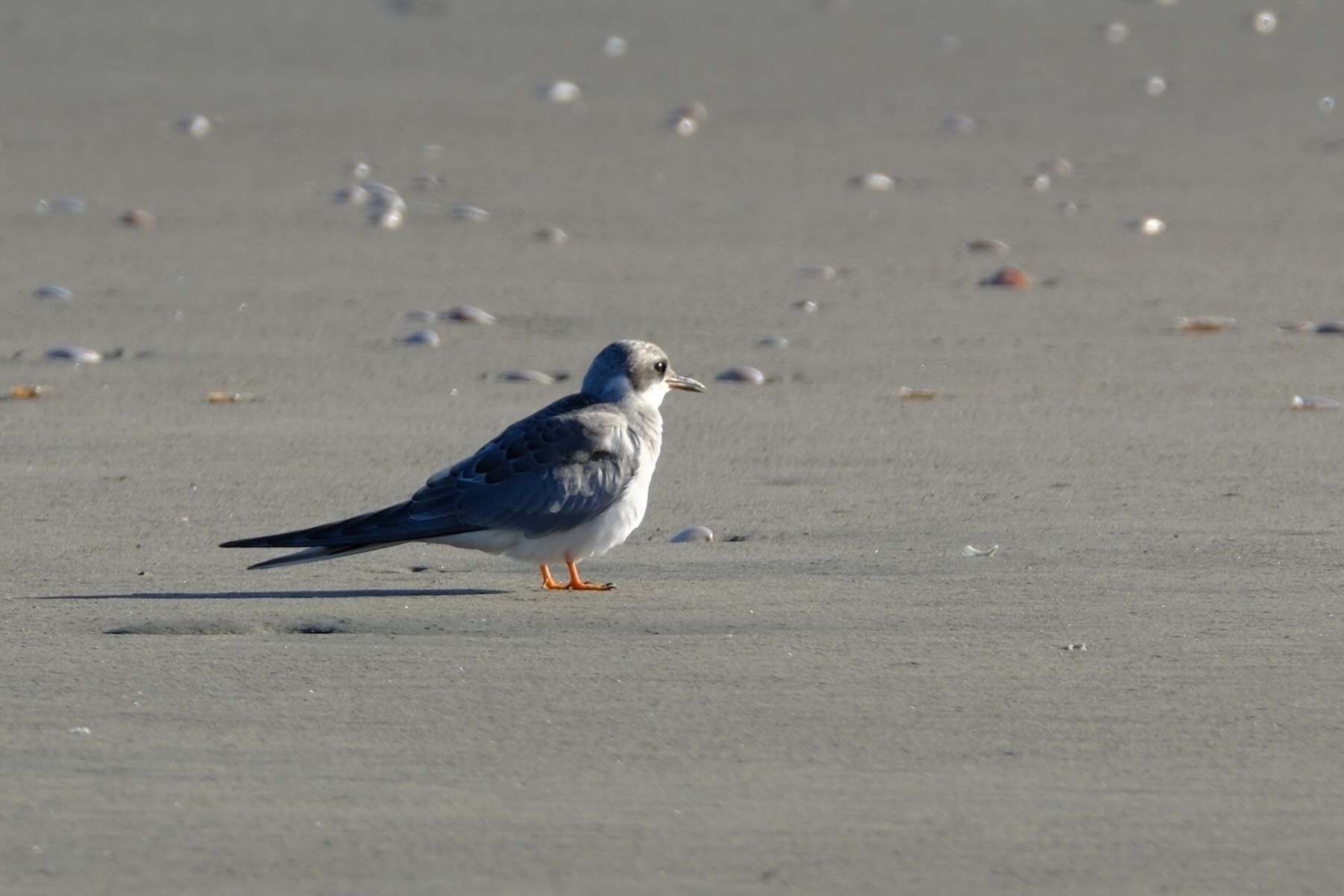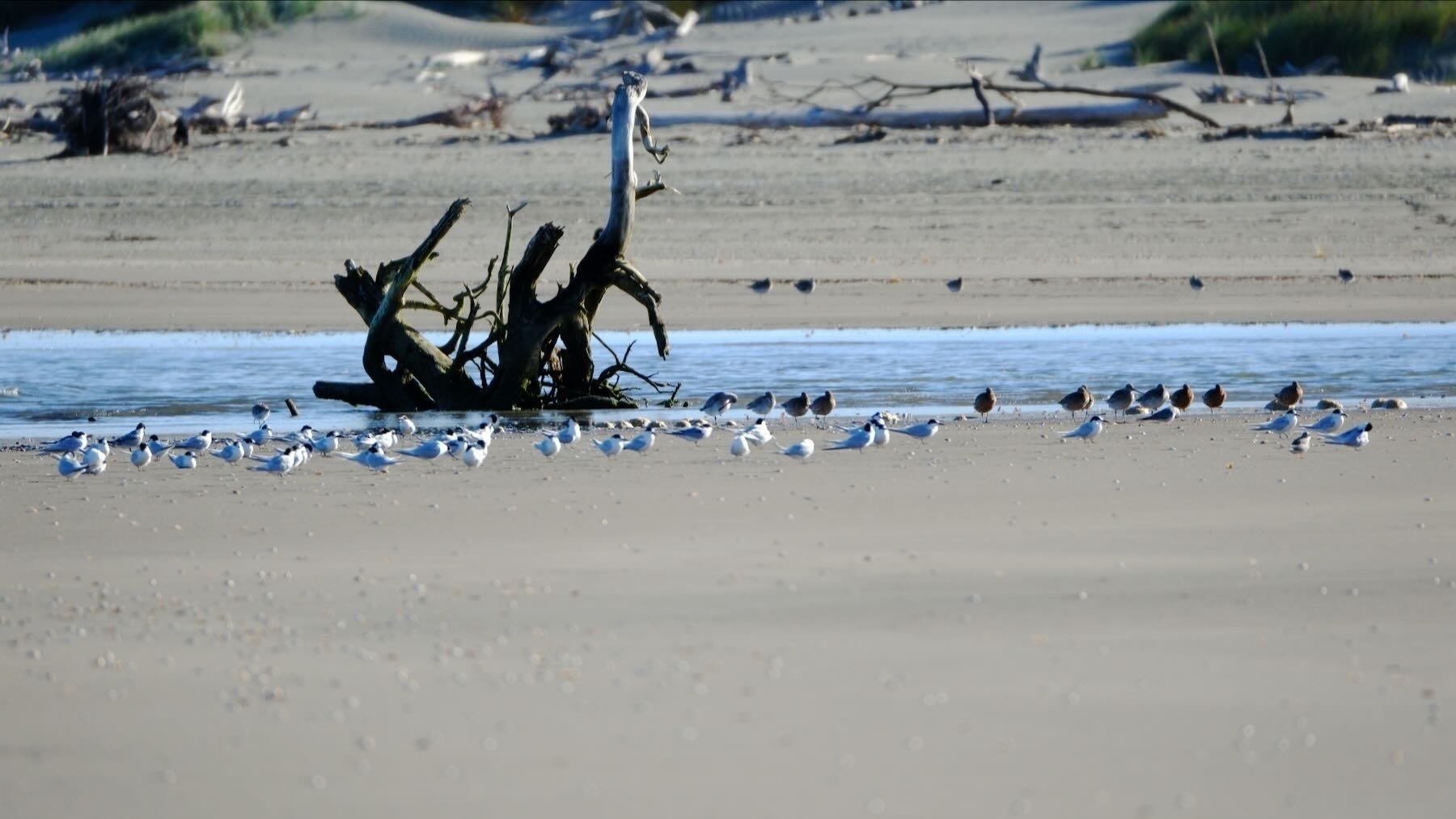Juvenile Black-fronted Tern

At this time of year we see flocks of White-fronted Terns hanging out in the estuary near the sea, but on 22 February 2024 this bird was sitting apart from the flock. Looking closer, it was a bit different, but has been confirmed as a juvenile Tarapirohe | Black-fronted Tern. That's a new addition to the Waikawa Beach Big List of Birds. 🐦
New Zealand status: Endemic
Conservation status: Nationally Endangered
Length: 28 cm; Weight: 95 g;
A medium-small blue-grey tern with a forked tail, short orange legs and bright orange pointed decurved bill. Breeding adults have pale blue-grey body plumage contrasting with a black cap and narrow white cheek stripe; non-breeding adults have a mottled grey cap, a black patch around the eye and ear coverts, and a black-tipped bill.
It's so encouraging this summer to see the estuary full of birds from the land to the sea and north and south of the river. There's a very young new Oystercatcher chick running round too, bringing the total of Pied Stilt and Oystercatcher chicks that have survived to 6.

I'm certain that one reason the birds have been so abundant this summer is that the easy access for vehicles to the beach has been blocked off. People have still been sometimes illegally accessing the beach through a track from one nearby property, through council land and destroying several metres of recently planted spinifex.
Some locals also carved a vehicle track through a pedestrian-only Reserve, even using a chainsaw to cut down a post that was in their way. Council ended up installing three signs warning vehicles off, but these vehicle-addled locals just laugh as they drive through anyway. Witnesses have reported some to the Police and to the Council.
The overall effect of the official entrance being closed though has been to very much reduce disturbance of the wildlife by vehicles.